If you’re betting or Betfair trading in horse racing you’ve probably heard of the terms, frontrunners, lay to back, held up horse and so on. These are terms reserved for the inplay section of the racing. But what does all of this mean and how can we use this to our advantage? And more importantly, how can you get all of that critical information completely free of charge?
Today we’re going to look at the in-play period of horse racing.
How does in-play differ?
In-play betting or trading is driven by how horses prefer to run and also other characteristics, which we will discuss in a second. The important thing to understand is that before a horse race starts it’s driven purely by opinion or the chance that people think the horse has of winning the race. But as soon as the gates fly open, or the starter lets them go on a jumps race, there are certain characteristics that defines how the race is run.
There are three critical stages to look out for at each individual race.
The three stages: start, middle and finish!

So first stage is obviously the start. If a horse gets a good break, then you may find it odds shorten a little bit, or perhaps it doesn’t get off to a good start and the opposite will happen. Over longer races that’s less important because they also get the chance to make up a good or bad start.
Then you obviously have the end of the race where the horse is produced for the win. Here you can judge whether the jockey has got the horse in a certain position to hopefully run on to cross the line and win the race.
Then of course there’s this big section in between which is ultimately determined by the typical pace of the race which determines how the horses like to run.
Why is the pace of the race important?
Horses are pack animals and so they typically move around in herds. Therefore they all have characteristics within them that determine where they like to be. For example some of them will be front runners. Front runners like to be positioned at the front and like to take a leadership role in the pack.
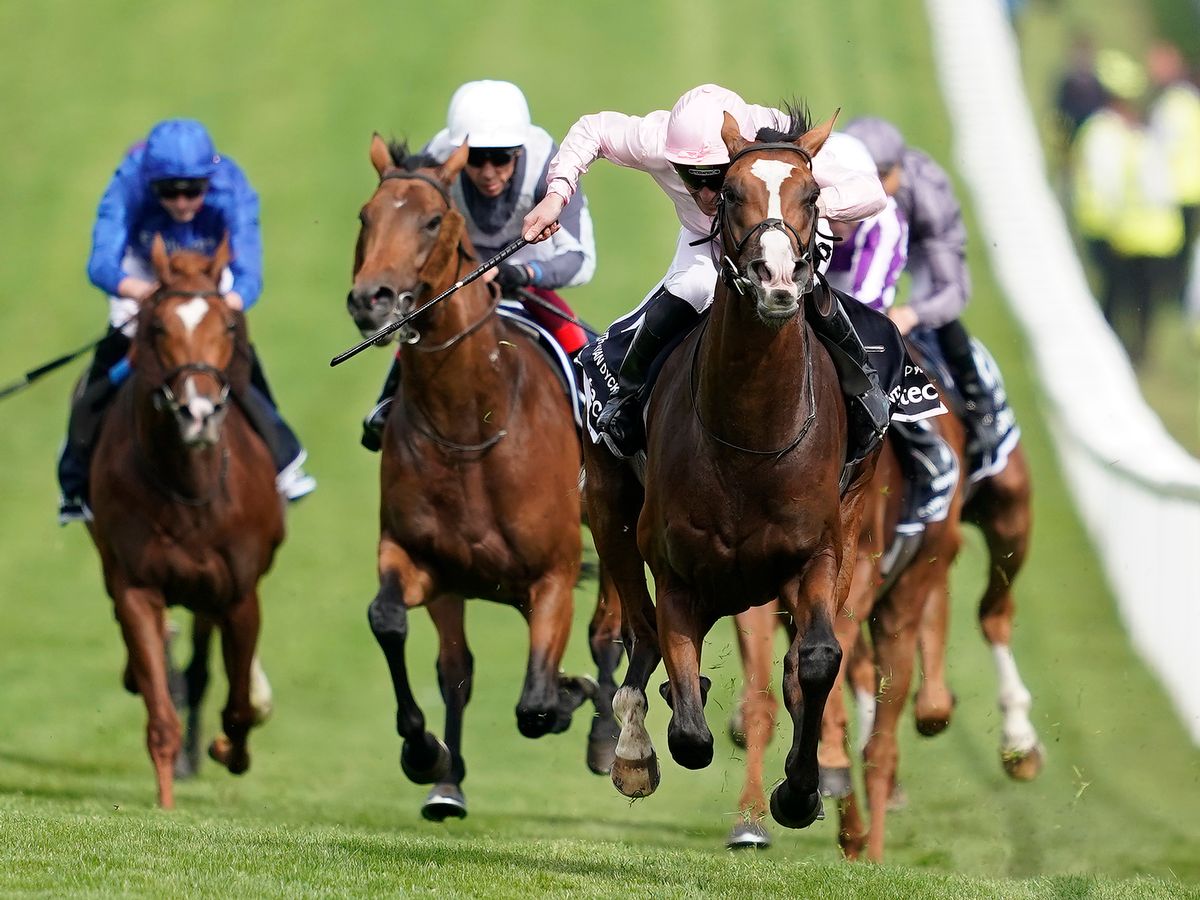
In comparison, you have horses who would prefer to be at the back of the pack and see all of the other horses to determine where they’re running. You also have horses that will like to sit in mid division, so you can even get a mixture of all of those individual styles.
It is a tactic even jockeys consider
The pace of the race isn’t something you only should only consider, when a jockey runs a race they will look at the pace of the race to figure out who they need to track and where they need to be positioned.
If you want a good example of this, Joseph O’Brien actually published on Twitter, his pace notes for the 2016 Derby.
It made for quite interesting read as he’s listed all of the horses within the race where he drew arrows based upon how fast he thinks those horses will run and roughly where they will be in the race. He used that tactic to figure out where he needs to be positioned when he was riding.
When you’re a jockey, that’s absolutely critical. You want to know the strength of the horse, how it prefers to run and then you use that to your advantage. If the horse has very little form line then it’s possible the jockey will not know, but in horses where there is a bit of form they will make post notes and that will determine roughly how that little portion of the race is run.
Where do people often fail in-play?
So when you’re trading on racing, especially when doing something in-play, like you’re dutching or you’re doing a front runner type strategy, how do you find all of the key critical information that you need?
I’ve seen a lot of people look at data from previous races in terms of what price horses have traded at. The problem is that when you’re data mining, it’s sort of statistical deja vu. You’re looking at stuff that has happened, not what will happen. You also have all sorts of anomalies in there that you may not be able to see.
Therefore these people tend to look at the data with their mindset already made up. For example, you could look at a horse that has traded lower by 30 ticks for the last five out of six races so you trade with that in mind. However, that doesn’t actually tell you what happened in those races or why it traded at that much lower price.
It’s much better to get a more fundamental, deeper understanding of exactly what is going on within a race. This is why we’re looking at the pace of the race because the pace and the running styles of individual horses would give you all of that information.
How to use pace maps to your advantage
So let’s get an understanding of exactly what we need to look at and how it influences the odds within an individual race.
There are great free of charge sources that will list out the general characteristics of each of these runners and allow you to determine how the race is likely to be run.
This will help you if you’re actively trading the race or you’re looking at it in-play as it will help you to make a judgement on whether you think the horse is running within its style or out of style. Meaning you’ll be able to anticipate exactly where the odds are likely to go based upon how that particular horse is performing.
Where to find your free resource
Since I recorded this video I’ve had many suggestions on where you can view pace information for free. To acknowledge them I will list the resources here, but also talk about the Racing TV site specifically.
You can find free pace information at: –
If you go to the Racing TV site and go to the races section it will tell you about the race cards that are on today. You will see if you click on a particular race that you will have different options like the form tracker, timeform and other insights.
However, the thing that we’re most interested in is the pace map so simply turn that option on.
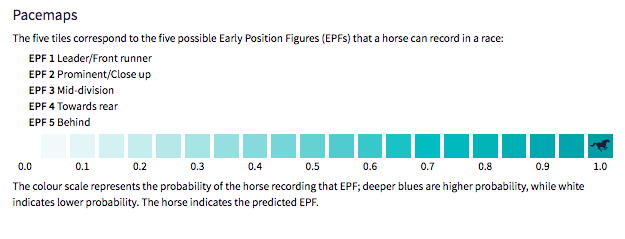
You can see there immediately, you’ve got access to a pace map which will tell you how the race is very likely to be run. You can use that information to make a selection or do a particular type of trade.
How looking at the likely pace can benefit you
The interesting thing about these pace cards is how often they are accurate as to how the race is likely to be run.
What we’re going to do now is look at an example using the pace to help inform our decisions. If you actually look at this particular screenshot of the pace you’ll notice that the race actually unfolded the way the pace map predicted.
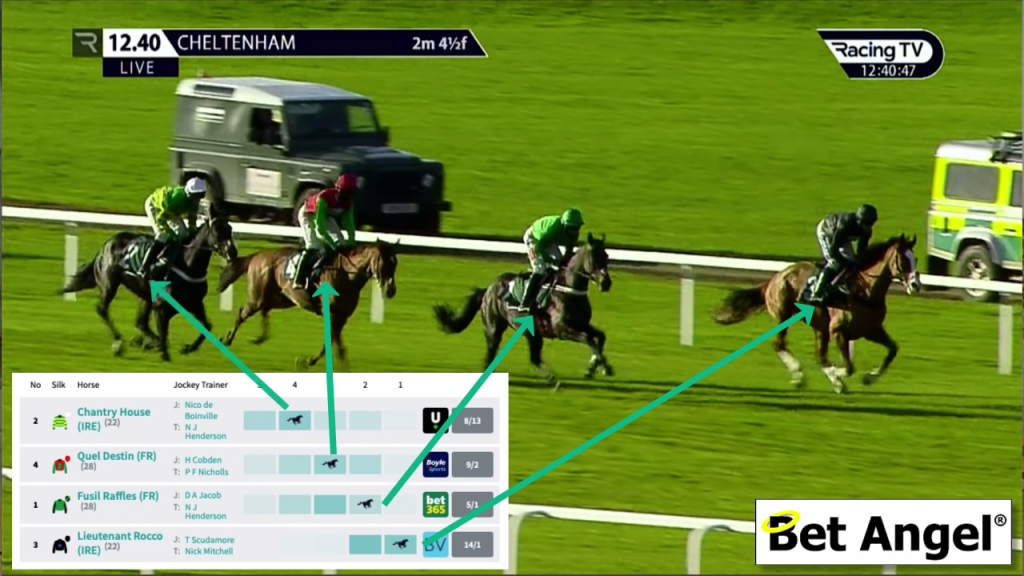
This really demonstrates how you’re looking for a determination as to whether the race is being run in a true manner and that everything is going to play out the way that you would expect.
There are more specific examples that we can look at so you can understand how being a front runner or being held up is likely to influence the outcome of a race.
What to look out for in pace
Mr. Magoo was featured as a horse that could run prominently and at first he did indeed live up to that by taking a lead within a few furlongs into the race.
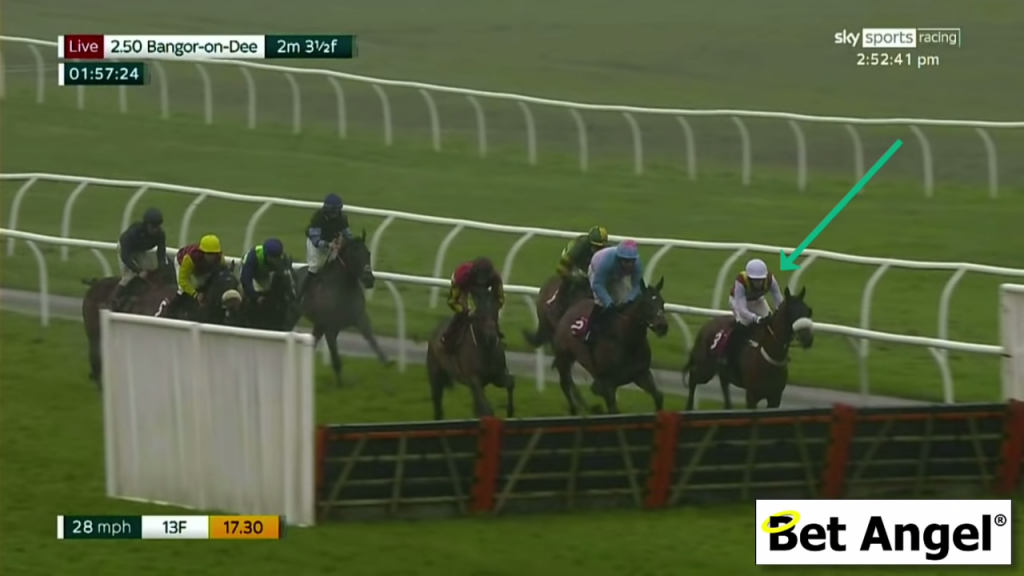
If we look at the chart you can see how the chart has gradually pulled his price in because not only is he prominent, but he’s managed to hold the lead for a reasonable amount of time.
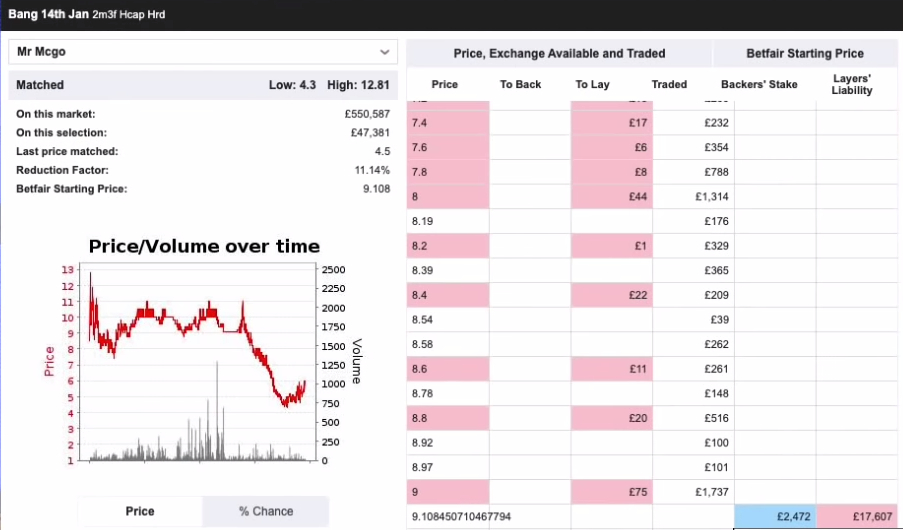
However, Mr. Magoo still had the issue of being produced for the win. He actually finished seventh in this particular race despite leading because he simply just ran out of steam.
You can see that this combination of a good start and the horse initially running to its style doesn’t always guarantee the result you’d expect. If you run out of energy, there’s not a lot you can do! However, because he was prominent during the key part of the race, his odds did come in.
What to take in consideration when using pace
Within all horse races, there’s an element of randomness in here. For example, with jumps the horse could fall or hit a fence which could disrupt the strategy or over the flat, especially the shorter flat races, the start and finish become much more dominant. This is something you should take that into consideration when you’re deploying a strategy.
If you’re looking at a favourite and you have an automation set up, when you’re looking at those race cards you should consider whether the horse is going to be prominent and therefore will its price begin to collapse. This will bound to happen if there’s less time left of the race and the horse is where it should be, then it’s more likely that the price will shorten if they’re leading.
So you wouldn’t do a lay to back on a favourite in a race that shows those characteristics, you would probably do the opposite. If you’re looking for a lay to back, maybe you’re looking for something that is likely to be held up, which may not be the favourite.
Remember, when you look at the pace cards, you understand what the pace of the race is going to be and where the favourite is positioned then it will allow you to make much better decisions.
What not to do
If you apply a blanket strategy across all markets then it just isn’t going to work. Creating something that just works generically on all basic races is probably the hardest thing to do.
Your role as a better or a Betfair trader is to actually get a strategy and then match it to a selection. That’s ultimately what you’re doing when you’re looking at the pace of a race. You’re trying to identify how that’s likely to influence the odds within your favour.
Now all you need to do is…
What you should do now is combine a beautiful piece of automation with a little bit of analysis and I’m pretty sure you’ll have a profitable Betfair trading strategy!

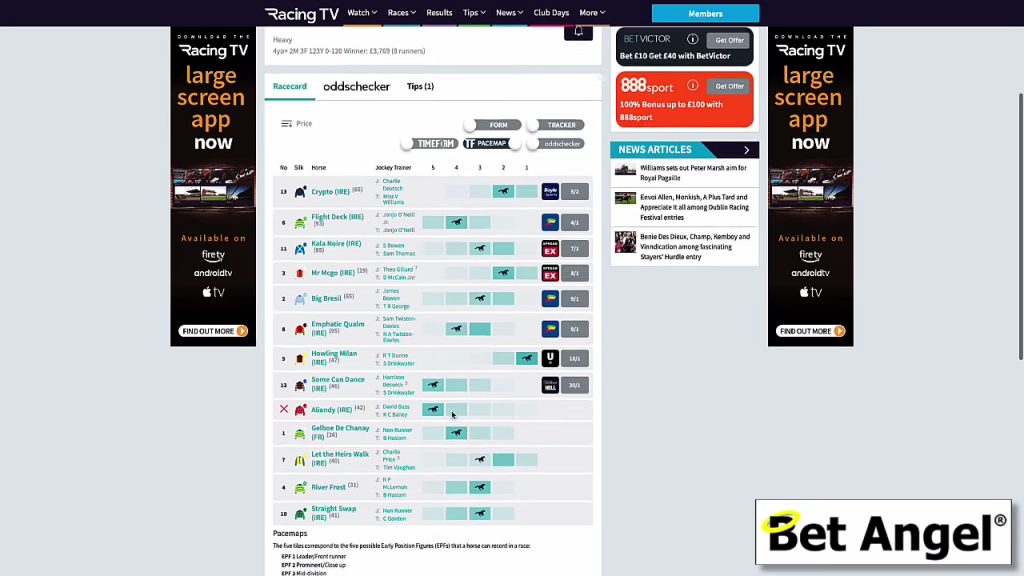
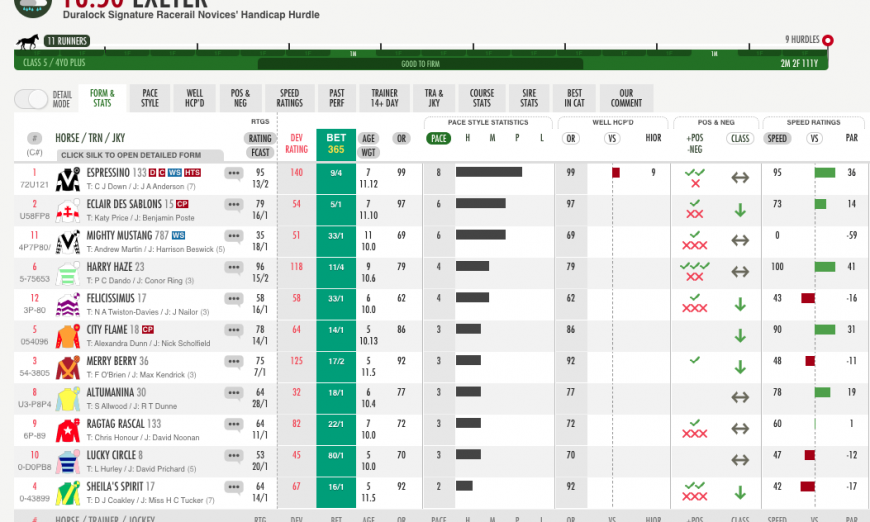
I think those links need updated, none of them have pace data anymore.